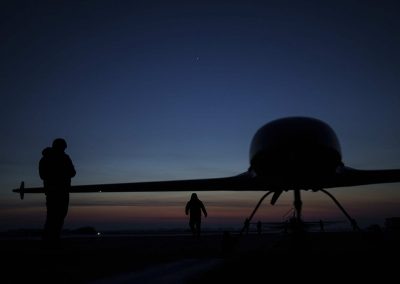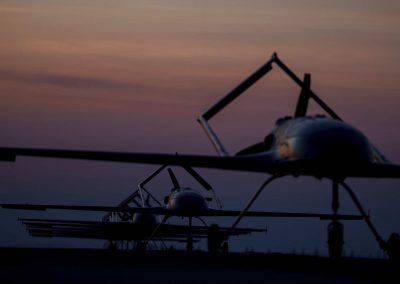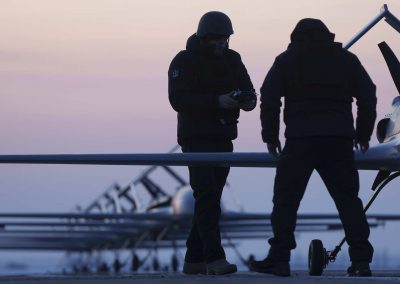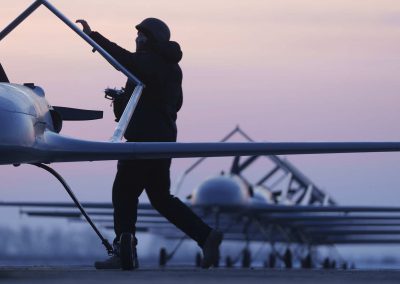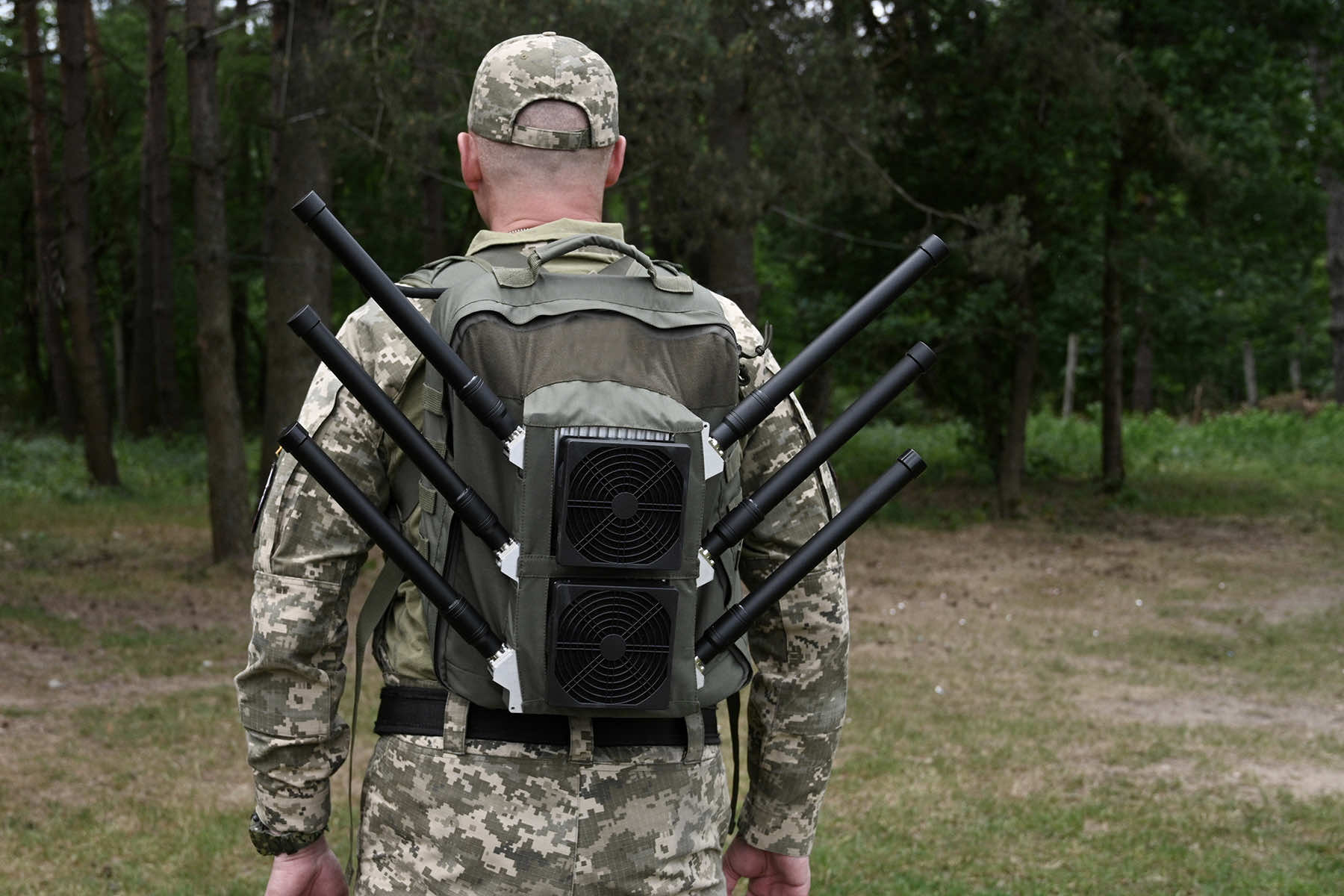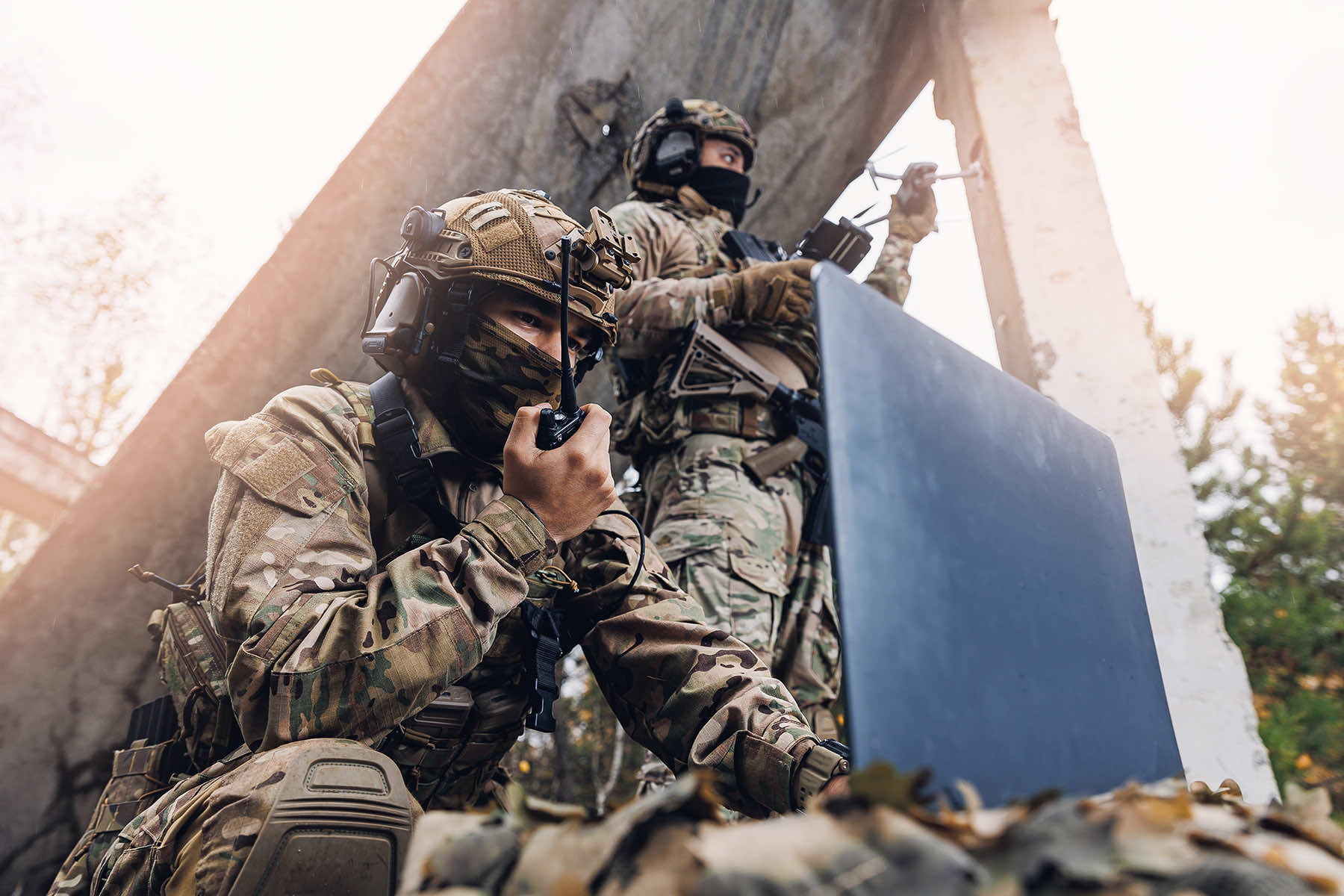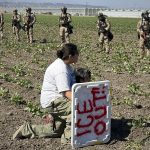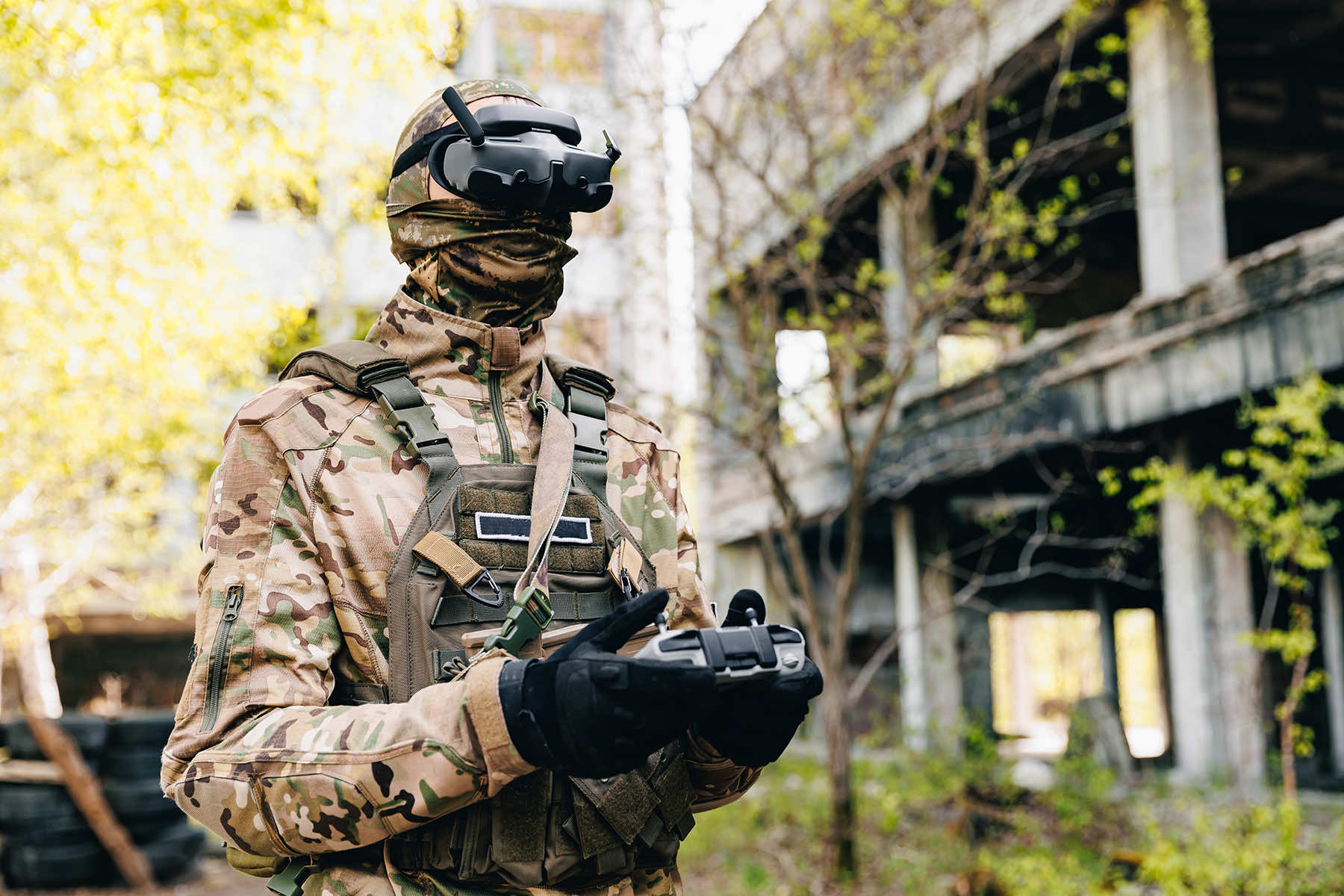
A battlefield revolution is unfolding across Ukraine, driven by wire-guided FPV drones and improvised strike tactics that have transformed front-line warfare into a test of adaptability and production, not just firepower.
While this shift continues to alter the strategic balance in the region, it also lays bare vulnerabilities within the United States’ military philosophy, a structure rooted in outdated assumptions, industrial inertia, and legacy platforms.
Ukraine’s battlefield is now defined by swarm tactics, cheap aerial vehicles, and constant adaptation. In this landscape, drones are not a support element, they are the frontline. Some are controlled by fly-by-wire systems to avoid jamming, others act as suicide vehicles, diving into trenches and vehicles at short range.
The results are immediate and devastating, often recorded in real-time, shared among soldiers, with tactics refined on the spot. Yet the implications of this new warfare stretch far beyond Ukraine.
The United States, still reliant on high-cost weapons systems and a defense-industrial model designed around decades-old logistical assumptions, is poorly positioned to fight or sustain a war in this environment.
The capacity to manufacture at scale, replenish losses, and evolve tactics rapidly are now decisive factors in war, and they no longer favor the United States. The production lines for important military equipment have moved offshore. The stockpiles on American soil are shallow. The ability to respond to a high-loss, high-turnover combat environment is in question.
In contrast, countries with industrial flexibility and domestic production dominance, like China, stand to benefit. A conflict between these powers would almost certainly expose the structural weaknesses in American planning.
Without the ability to build quickly, the fight would not last long before exhaustion and attrition set in. Drones do not just fly, they consume. And consumption now happens faster than the U.S. military’s ability to restock.
What the U.S. faces is not just a question of tactical readiness, but structural incompatibility with the type of war now unfolding in Ukraine. Drone attrition warfare favors those who can build, lose, and replace at speed.
The U.S. armed forces, built around trillion-dollar platforms and decades-long procurement cycles, are not structured for that kind of conflict. Military planners continue to prioritize aircraft carriers, manned bombers, and integrated systems that are vulnerable to swarms of cheap, rapidly deployed drones.
This mismatch mirrors the historical collapse of 19th-century tactics under the firepower of World War I. It was a strategic inertia where horse-mounted cavalry charged into the killing fields of machine guns.
In a sustained war today, the U.S. may run out of critical systems faster than it can replace them. Domestic production capacity has eroded over the decades, and essential rare earth minerals are largely controlled by China.
Drone manufacturing itself is dominated by foreign suppliers like China. In a battlefield defined by consumption, not preservation, the U.S. position grows weaker by the day. North Korea, though not a drone-producing powerhouse, is already learning these lessons firsthand, and fast.
In early 2025, Ukrainian media documented the role of North Korean troops fighting in the Kursk region. The tactics were described as reckless and brutal. According to Ukrainian field reports, North Korean forces initially surged forward in large formations, advancing across snowy fields with little cover or coordination. The result was a catastrophic slaughter. They were used as expendable forces, exposed, and decimated.
Over the following months, these forces began to adapt. Ukrainian military officials noted changes in North Korean formations and behavior. Instead of advancing in clusters, North Korean units began operating in small groups, adjusting to drone presence and attempting to mask their movements.
For North Korea, the war in Ukraine presents more than a military exchange. It offers a rare opportunity to modernize through live experimentation. In 2024, North Korea entered a military cooperation pact with Russia.
The agreement offered technological and political support in exchange for military involvement. It effectively ended North Korea’s isolation from global defense developments. It also opened the door to real-world war experience, a rarity for a country that has not fought a conventional war since the early 1950s.
Ukrainian President Volodymyr Zelenskyy stated in February that North Korea had already lost 4,000 troops in Ukraine, nearly half of the estimated 10,000 it deployed. But the value of the exchange appears to go beyond the numbers. It is the transformation of a force that once operated on outdated doctrine into one that now understands how to counter drones, conceal movement, and operate under persistent aerial threat.
Captured battlefield diaries provide further insight into this shift. Ukrainian intelligence recovered the journal of a deceased North Korean soldier, which outlined primitive but effective anti-drone tactics. One soldier would act as bait, drawing the drone in, while others prepared to shoot it down. The notes specified distances and timing, describing how to freeze in place to force the drone to hover, making it an easier target.
North Korean forces have reportedly learned how to assault fortified positions, bridge rivers under threat, and better camouflage their presence in drone-patrolled environments. These are not speculative lessons, they are battlefield-tested evolutions, hardened under fire.
In May, Russian state media released footage showing North Korean troops training with modified semiautomatic shotguns, designed to bring down drones. The training reflects a clear awareness that survival in this theater requires adaptive countermeasures. North Korea is not merely a supplier of ammunition or troops. It is a participant in a technological conflict, and it is gaining knowledge that would never be acquired through drills.
Meanwhile, North Korea has unveiled a new drone platform, described in March as domestically developed and believed to incorporate AI features. While its exact capabilities are unknown, the system’s debut signals that North Korea is beginning to explore counter-drone defenses along with offensive drone deployment.
North Korea’s domestic drone program came after months of battlefield exposure to Russian tactics involving drone warfare. Russia has used Iranian-made drones to carry out long-range attacks against Ukrainian infrastructure, and North Korea appears to be developing models for a similar purpose.
While it is unclear how much access North Korea has had to Russian systems or planning, its drone development efforts may reflect an attempt to apply some of the tactics observed during its cooperation with Russian forces.
What is being observed on the ground is more than tactical flexibility. It signals a structural evolution in how a once-isolated military force is absorbing and responding to 21st-century threats.
But not all of North Korea’s contributions to the war effort have gone smoothly. Before it deployed ground troops, North Korea had supplied Russia with large quantities of artillery shells and short-range ballistic missiles. Many of these were unreliable or poorly manufactured, contributing little to the front-line effectiveness of Russian operations. But even these failures carry lessons.
One of North Korea’s consistent weaknesses has been quality control. Ammunition may be mass-produced but fails under operational pressure. The war in Ukraine, however, has shown that poor performance has consequences, and those consequences are now driving improvements. Failures on the battlefield serve as feedback, especially when troops return reports of malfunctioning weapons or poorly performing systems.
Despite this learning curve, there remain limitations to what North Korea can gain. Its internal military doctrine is opaque, and how these lessons are integrated across its chain of command remains uncertain. Whether knowledge gained in Ukraine is transferred effectively into domestic training and field operations is unknown.
North Korea’s military system is rigid and centralized, which could delay or dilute any battlefield innovations once the troops return home. Nonetheless, the longer North Korean troops remain embedded with Russian forces, the more cumulative the knowledge becomes.
The broader implications of these developments also extend beyond the Korean Peninsula. The U.S. now faces a potential future where both its adversaries and their partners are gaining combat experience in environments saturated with drones, decentralized command tactics, and battlefield improvisation.
The U.S. military, by contrast, continues to center its strategy around large-scale, high-cost platforms with limited production scalability. Aircraft carriers, stealth bombers, and manned vehicles remain the backbone of American warfighting systems designed for deterrence and projection, not rapid attrition or drone swarm response.
China, which dominates global drone manufacturing and controls much of the rare earth mineral supply chain necessary for advanced electronics, has been watching the war in Ukraine closely. In a future conflict, China could scale production far faster than the United States. Without a domestic industrial base capable of replenishing key components, the U.S. risks rapid depletion of its most advanced weapons systems. The assumption that war will be waged on American terms is no longer guaranteed.
North Korea’s experience in Ukraine serves as a warning and a demonstration. What began as a transactional alliance, troops in exchange for political and technological concessions, has evolved into a proving ground for tactical adaptation and technological catch-up. It is not just North Korea that is watching. The battlefield of Ukraine is a stage where global adversaries are refining their strategies for whatever comes next.
While China has not entered the war directly, it is absorbing lessons from a distance. Through covert support to Russia, reportedly in the form of dual-use technologies, drone components, and industrial materials, China gains visibility into how low-cost systems perform against NATO-backed defense networks.
It is also studying battlefield data in real time, like how Ukrainian drone swarms are deployed, how Russian logistics hold under pressure, and how Western aid shapes endurance. For China, the war in Ukraine offers a laboratory for testing the viability of proxy warfare, supply chain disruption, and long-term attrition without committing its own forces.
The lesson for the U.S. is clear, but America’s military thinking remains entrenched in past assumptions. Modern warfare is no longer just about who has the largest arsenal, but who can adapt the fastest. In this arena, the U.S. finds itself unprepared, not just for the war it expects, but for the warfare that is already underway.
© Photo
Evgeniy Maloletka (AP), and Drop of Light, Parilov, and Bumble Dee (via Shutterstock)

